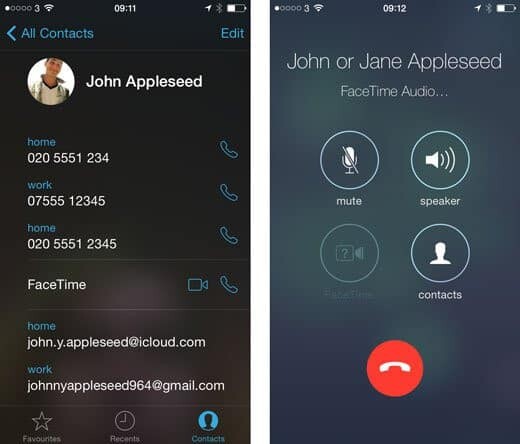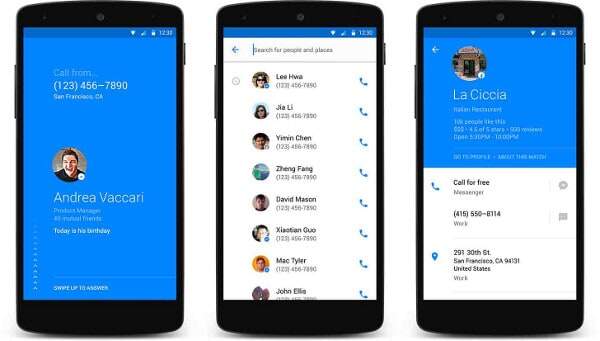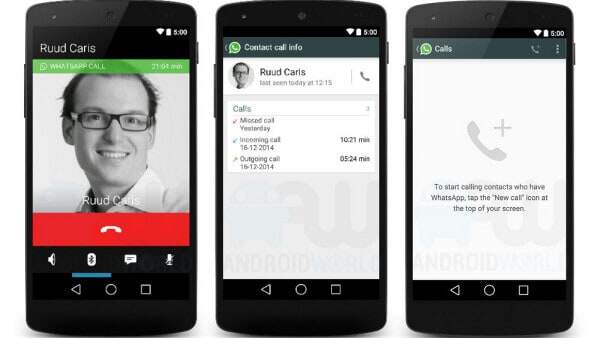While our smartphones aren’t phone anymore, their phone-calling real estate is still a prime asset.
VoLTE stands for Voice over LTE. It has been in the making for quite some time, but haven’t made its grand public appearance yet. While carriers around the globe boast LTE adoption stats, this says NOTHING about the lag of the carrier’s once main service – the humble voice call.
Today, in almost all cases where you open your smartphone greeted with an LTE network, if you make a phone call, it will go over 3G or GSM. Why? Because for voice to traverse LTE it requires VoLTE – or some other workaround means. Once VoLTE makes it into the scene, it will need to replace the voice calls today – and be a part of the smartphone’s dialer.
But there are other means of making calls these days, and I am not talking about Skype buddy lists.
Here is how the different players on the market redefining how we make calls, and trying to win the real-estate of the phone’s dialer by… replacing it.
Apple
In some ways, Apple is dependent on carriers selling its smartphones through contract agreements. So it can’t piss off their channel to market too much. But they can are treading on a very fine line here.
It started with FaceTime. Apple’s video chat service. Which then grew to iMessage, and later an introduction of FaceTime Audio.
Apple controls the iPhone’s UI, which means it decides how the dialer looks like and what functions it exposes to the user.

The end result?
- When you want to send an SMS to someone, Apple will automatically “convert” it to an iMessage if possible
- When you want to make a call to someone, if he uses an Apple device, you have the option to call him – voice or video – using FaceTime
Google has Hangouts. You get it pre-installed in Android devices. Many never use it, but it is there.
Google tried making Hangouts sticky in the past, so they allowed it to receive and send SMS – similar in some ways to how Apple does iMessage, but different as the experience isn’t as seamless.
On a mobile phone, think of Hangouts as a step in the way. Google’s Project Fi, their new MVNO initiative, probably uses Hangouts internally – it does connect with Hangouts as their website explains:
Connect any device that supports Google Hangouts (Android, iOS, Windows, Mac, or Chromebook) to your number. Then, talk and text with anyone—it doesn’t matter what device they’re using.
Google is bulking up its communication chops nicely these past few years, and Fi is the next step. I am certain that part of the tech and learnings that Google gains from Fi will find its way back to their general Hangouts service.
Facebook had its share of romance with mobile. From rumors of Facebook smartphones, to a failed Facebook Home app.
For Facebook mobile is critical. Many of its customers use it exclusively on mobile. How do you increase your share in a digital life pie if you are Facebook? You try to control the smartphone experience.
Building a smartphone is hard (ask Amazon), so Facebook tried controlling the home screen by developing a Facebook centric Android launcher. This didn’t work, but wasn’t a failure at the scale of a smartphone launch.
Next up, is their relatively new Hello app. It looks rather innocuous – you receive calls through their Hello app to get a “social ID” – Facebook will match the phone number to a person’s Facebook account to show to you on incoming calls.

The end result?
- Facebook Hello is used as your smartphone’s calling app
- They didn’t miss the opportunity of adding their own dialer in – which enables you to call via Messenger…
Whatsapp (still Facebook)
Whatsapp is a part of Facebook, but it took a very different approach. It simply added voice calling to its app.
If you are interested in understanding the size of Whatsapp, then there’s a good bulleted list on Mobile Industry Review.
Think of this move in the following context:
- As of April 2015, WhatsApp has more than 800 million active users
- Average amount of time spent by users on WhatsApp is 195 minutes a week
- Teenagers use Whatsapp all the time. At least here in Israel. They don’t talk – they text. Faced with the need to escalate a text chat to a voice call – will they switch app and context or just press the phone icon on the Whatsapp page?

What is your dialer now? The traditional phone dialer with its contacts app or Whatsapp?
Why is it important?
Communication is being redefined. Switching from voice and video towards data access and messaging.
This brings with it a bigger change of what is considered prime real estate on one smartphone’s display, and there are non-telco vendors who are positioned nicely to displace the carriers from the dialer as well. Where would that leave the carrier’s efforts with VoLTE?


About three years ago Facebook installed a Skype backend to make voice and video calls using Facebook. And it was available until a couple of months ago when Facebook updated with its own voice and video backend. Bottom line is that I never received any calls over it; even now I may occasionally have text message exchanges with Facebook friends. In the end it boils down to the Directory Dilemna issue about which Dan York recently posted. “Whom do you want to talk to?” http://www.circleid.com/posts/20160515_directory_dilemma_why_facebook_google_skype_may_win_mobile_app_war/
Thanks Jim.
The main difference today is that this is done within the Messenger app, which is a different type of engagement than Facebook, and for some, this is where communication happens.
If you look at Whatsapp or Apple and Google’s positions, they are also very strong in the smartphone real estate domain…
Thanks for the link, I enjoyed reading this post.
This is a big ‘can of worms’. On one hand, the user doesn’t necessarily care how their ‘call’ works, but on the other hand these new techniques add extra complexity to the communication options available. I would be concerned that this is only going to confuse people as they are presented with yet more options.
While true Jon, this is how we live today – with multiple apps that don’t talk to each other. It may change in the future, but I can’t see how that happens any time soon.